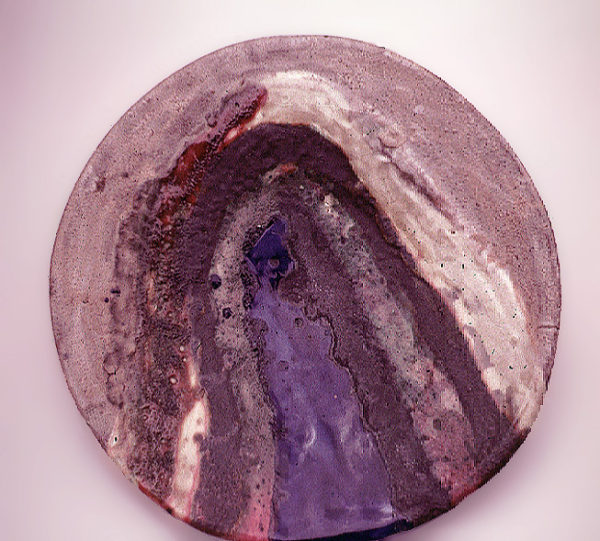
Vaea Marx, Plate, 1966, Stoneware, 15 x15 x2 ¾ in., Gift of Mr. and Mrs. Fred Marer, Scripps College
Vaea Marx was born in 1929 on the island of Tahiti to French parents. He was educated in France and lived there during World War II, where he was a member of the French Resistance. He recalls, at the age of 14, that he helped blow up a building run by Germans. He was later captured by the Germans for this incident, but was released because they couldn’t believe that a young kid could be responsible.
At 18, he left for Australia where he was employed as a pastry chef. Marx longed for the outback though and worked until he had enough money saved up to be a cowboy; he would later draw from this experience by creating saddles in clay. While in Australia he met a man who was traveling to Japan to train with Kawai Kanjiro, a renowned potter affiliated with the folk art movement. Marx decided he wanted to join him and that began his foray into ceramics.
Marx later became Peter Voulkos’s longtime friend and assistant at UC Berkeley. It was Voulkos who showed Marx that clay could be used to create more than just functional cups and bowls. Marx was at the forefront of the ceramics transformation, yet his story and contributions to art have been slowly lost with time.
This plate was thrown on the wheel and then glazed to simulate strata, which are geological patterns. Strata reveal the passing of time and each layer contains a story that only sediment can tell. Marx recalls his inspiration for this piece: “I am aware of all the layers of the land. I spent so much time roaming on horseback, [land] is all there was.”[1] Red glaze splashes through near the top and hints at the uncontrollable nature of a volcano. Each band of color grows darker in its movement toward the middle where the viewer’s eye hovers on the bright purple center. In a way this piece mirrors Marx’s life, stories layered and speckled with adventure and change at every turn.
Marx is currently working on a ceramic version of “Enku.” Enku are seventeenth century wood sculptures created by a monk who was traveling around Japan; the sculptures were given as gifts to hosts. Marx’s versions are inspired by the “immediacy and randomness of ‘Enku.’ They are [made] fast and no two alike.”[2] Marx works out of a studio known as The West Coast Macaroni Factory. The studio is owned by Voulkos’s daughter; a fitting place for Marx to continue his story with clay.
[1] Email correspondence between the artist and R. Rangel, 17 Aug. 2016.
[2] Ibid.

